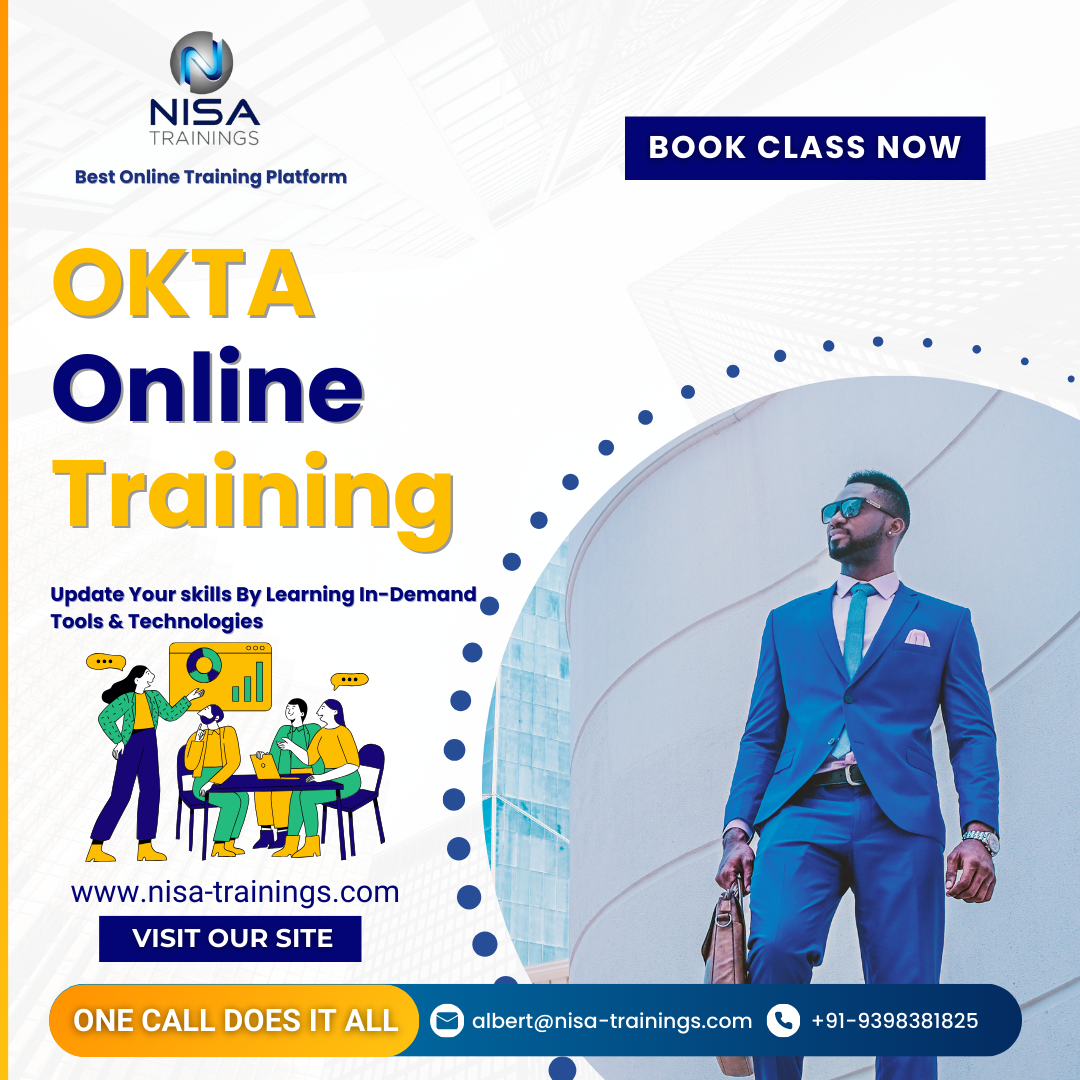OKTA Training
Okta is a comprehensive identity and access management (IAM) platform designed to help organizations securely manage and authenticate users, applications, and devices. It provides cloud-based solutions for managing user identities and access, offering single sign-on (SSO), multi-factor authentication (MFA), lifecycle management, and more.

Why should you choose Nisa For OKTA Training?
Nisa Trainings is the best online training platform for conducting one-on-one interactive live sessions with a 1:1 student-teacher ratio. You can gain hands-on experience by working on near-real-time projects under the guidance of our experienced faculty. We support you even after the completion of the course and happy to clarify your doubts anytime. Our teaching style at Nisa Trainings is entirely hands-on. You’ll have access to our desktop screen and will be actively conducting hands-on labs on your desktop.
Job Assistance
If you face any problem while working on OKTA Course, then Nisa Trainings is simply a Call/Text/Email away to assist you. We offer Online Job Support for professionals to assist them and to solve their problems in real-time.
The Process we follow for our Online Job Support Service:
- We receive your inquiry for Online Job
- We will arrange a telephone call with our consultant to grasp your complete requirement and the tools you’re
- If our consultant is 100% confident in taking up your requirement and when you are also comfortable with our consultant, we will only agree to provide service. And then you have to make the payment to get the service from
- We will fix the timing for Online Job Support as mutually agreed by you and our consultant.
Course Information
OKTA Training
Duration: 25 Hours
Timings: Weekdays (1-2 Hours per day) [OR] Weekends (2-3 Hours per day)
Training Method: Instructor Led Online One-on-One Live Interactive
Sessions.
COURSE CONTENT :
1. Introduction to OKTA
- Overview of OKTA: Learn what OKTA is, its key features, and why it’s widely used.
- IAM Fundamentals: Understand identity and access management principles.
- Components of OKTA: Get familiar with OKTA’s components like directories, apps, and users.
2. User and Group Management
- Creating and Managing Users: Learn how to create, update, and manage users within OKTA.
- Group Management: Learn how to create groups, assign users to groups, and use groups for policy enforcement.
- User Lifecycle Management: Understand how to manage user account lifecycle, including onboarding, role-based access, and offboarding.
3. Single Sign-On (SSO)
- What is SSO?: Understand how Single Sign-On works and its benefits.
- Setting Up SSO: Learn how to configure SSO for various applications.
- SSO Integration with Apps: Learn how to integrate apps with OKTA for centralized authentication.
4. Multi-Factor Authentication (MFA)
- MFA Overview: Understand the importance of MFA in securing user access.
- Configuring MFA: Learn how to configure MFA in OKTA for added security.
- MFA Policies and Enforcement: Explore how to create and enforce MFA policies.
5. Access Management and Policies
- Creating and Managing Policies: Learn how to set access policies based on user roles and other criteria.
- Access Control for Apps and Resources: Learn how to define who has access to which resources.
- Conditional Access: Set up policies based on factors such as location, device, and risk level.
6. Integrations and API Access
- Integrating Applications: Learn how to integrate third-party apps and services with OKTA.
- APIs and SDKs: Learn how to use OKTA’s APIs and SDKs to build custom integrations.
- Provisioning and Deprovisioning: Learn how to automate the user provisioning and deprovisioning process.
7. Reporting and Monitoring
- Audit Logs: Understand how to monitor user activities and access attempts through OKTA’s audit logs.
- Reports: Learn how to generate reports for compliance and security reviews.
8. Advanced Features
- Adaptive Authentication: Explore how OKTA uses adaptive authentication for a more dynamic and secure authentication process.
- API Access Management: Learn how to protect your APIs using OKTA’s access management features.
9. OKTA Security Best Practices
- Secure Configuration: Best practices for configuring OKTA to ensure maximum security.
- Risk Mitigation: Learn how to mitigate risks associated with user access, including data breaches.

